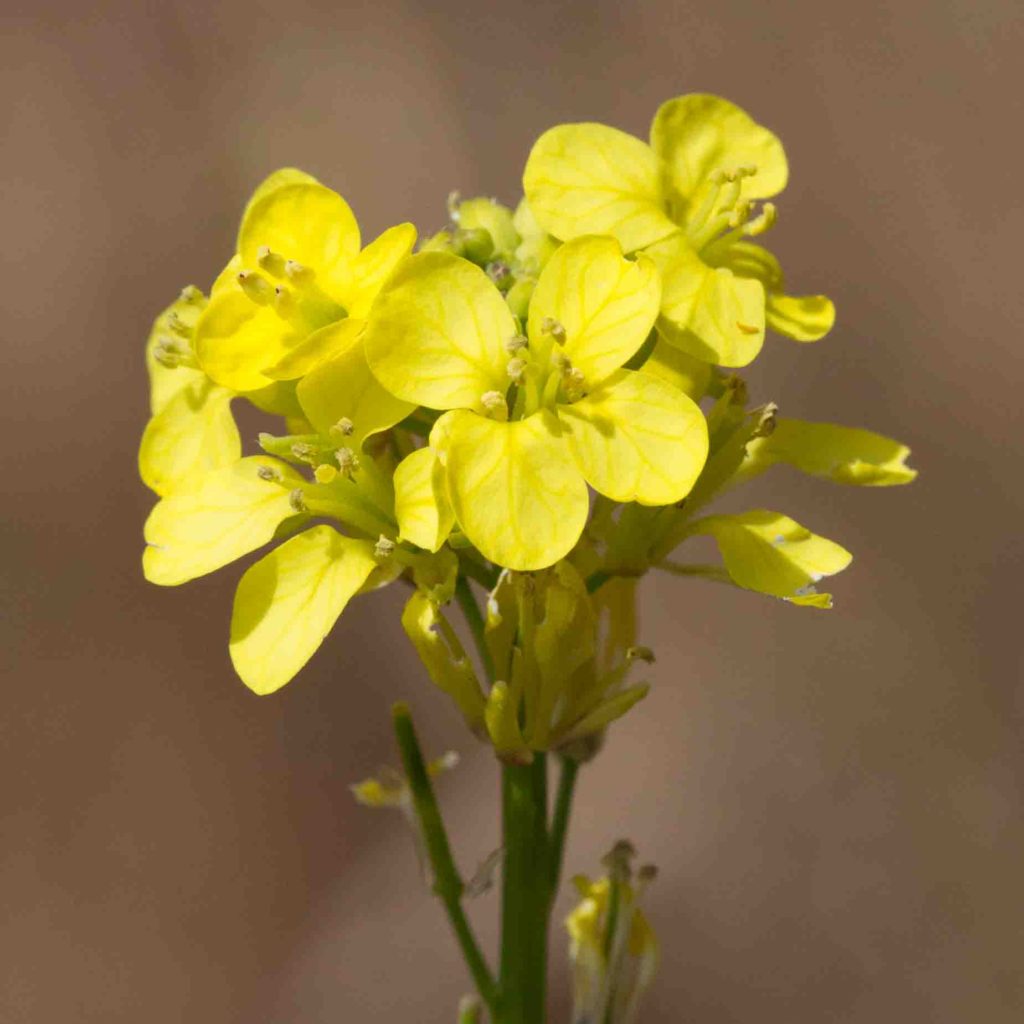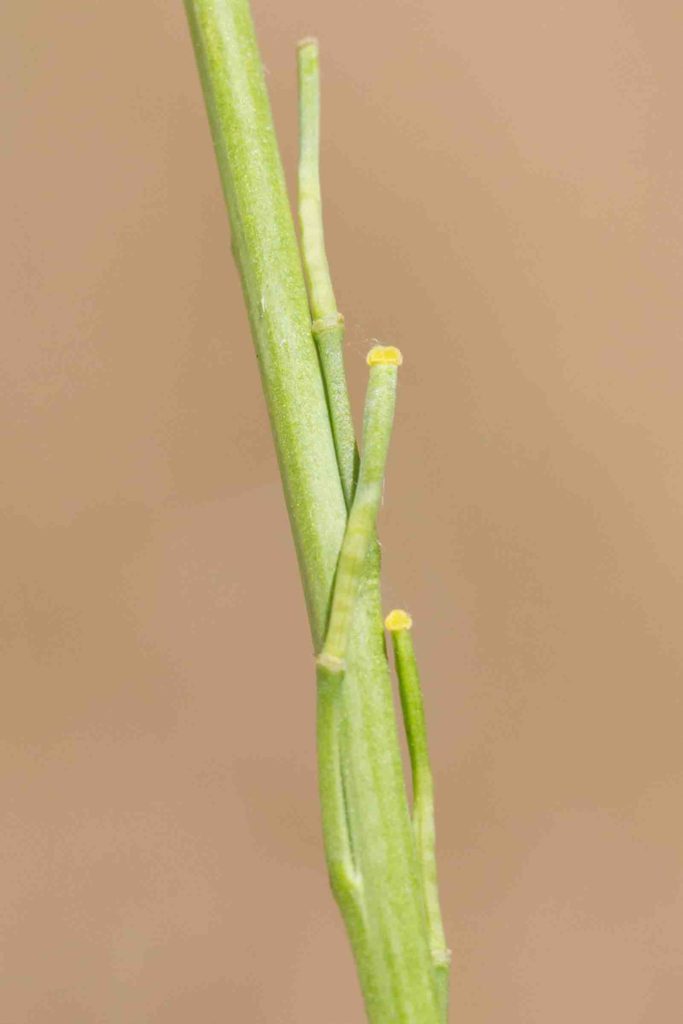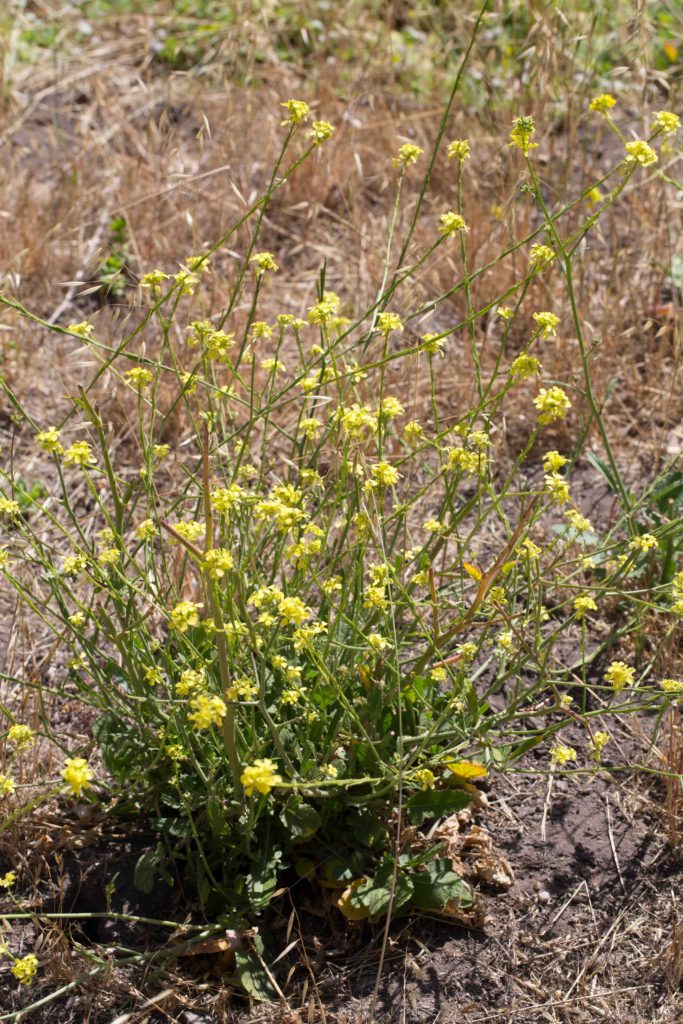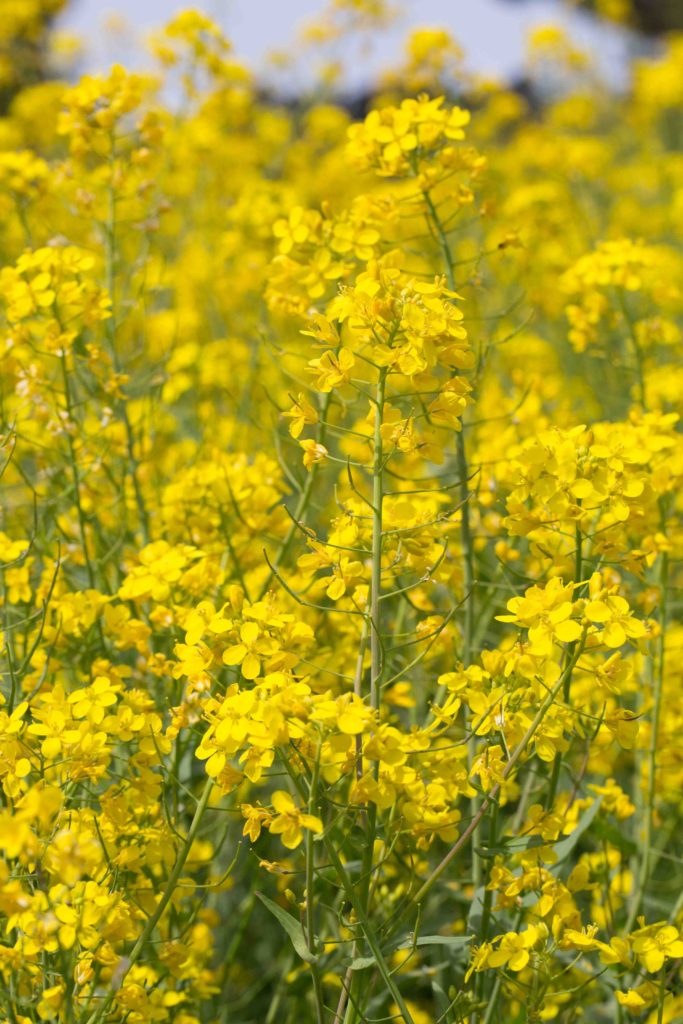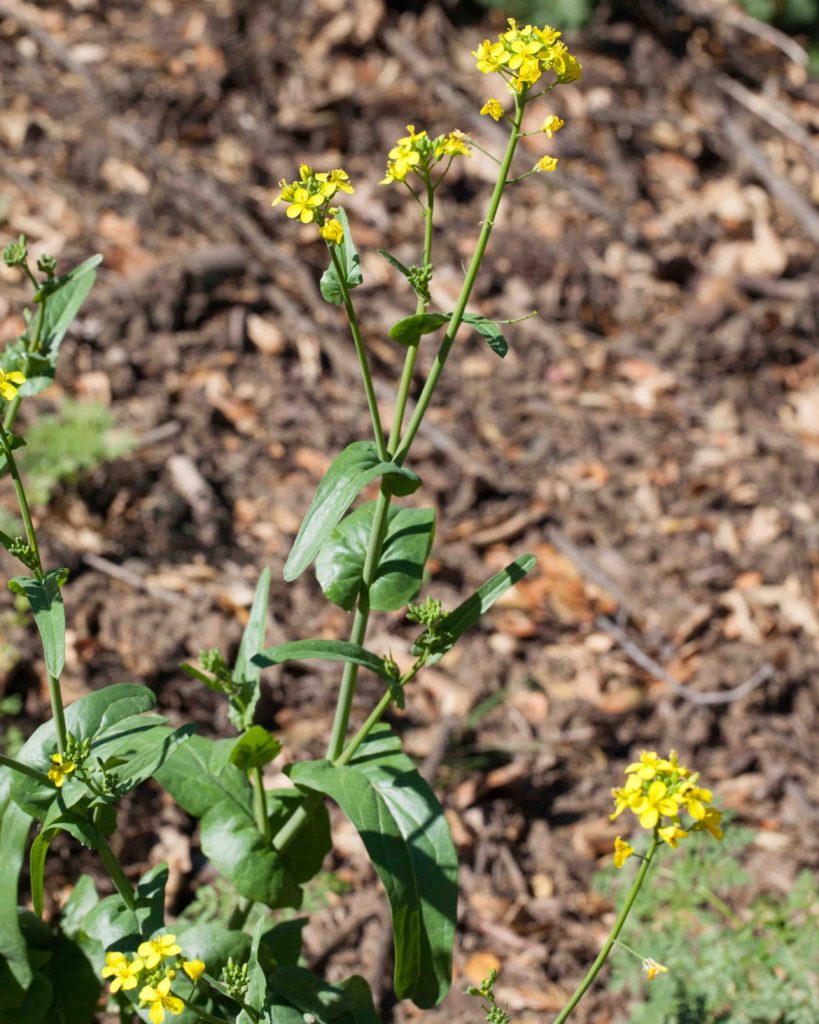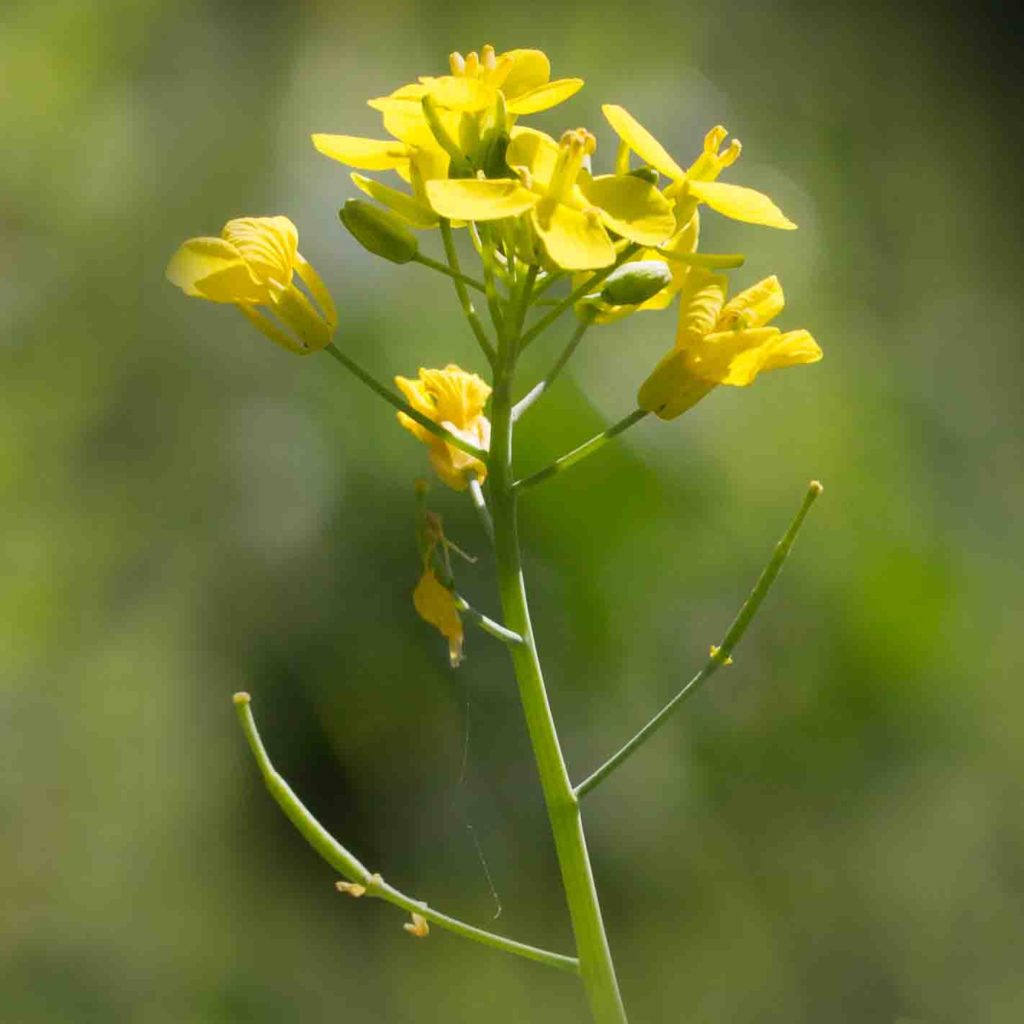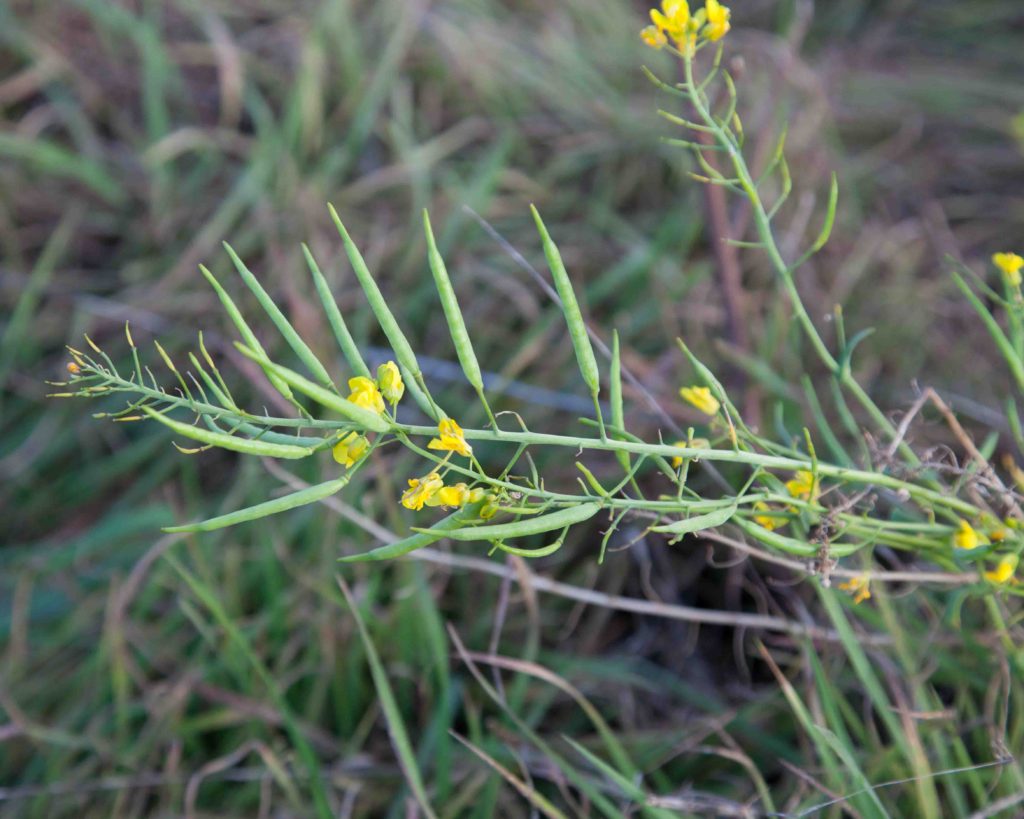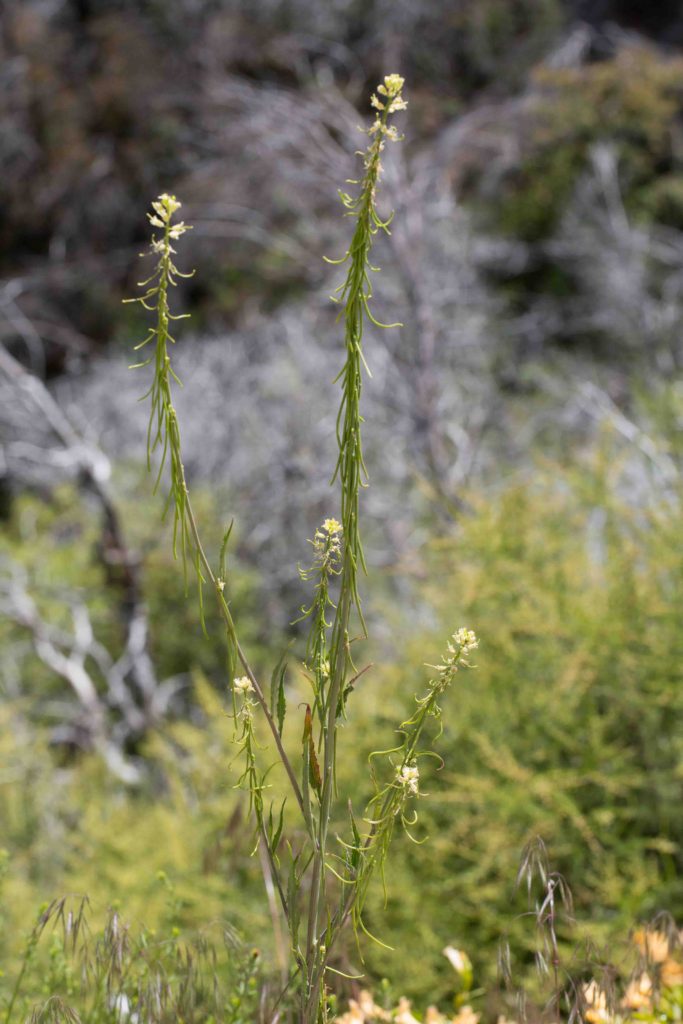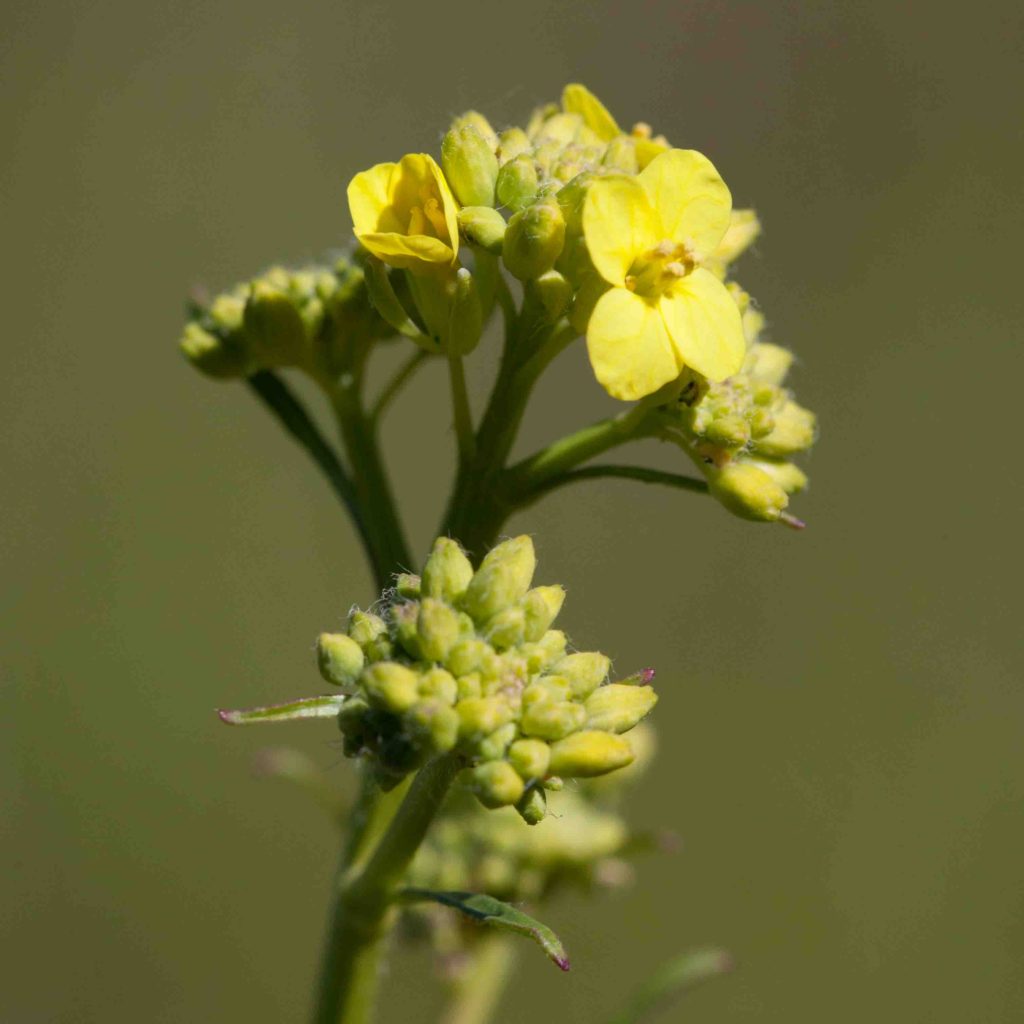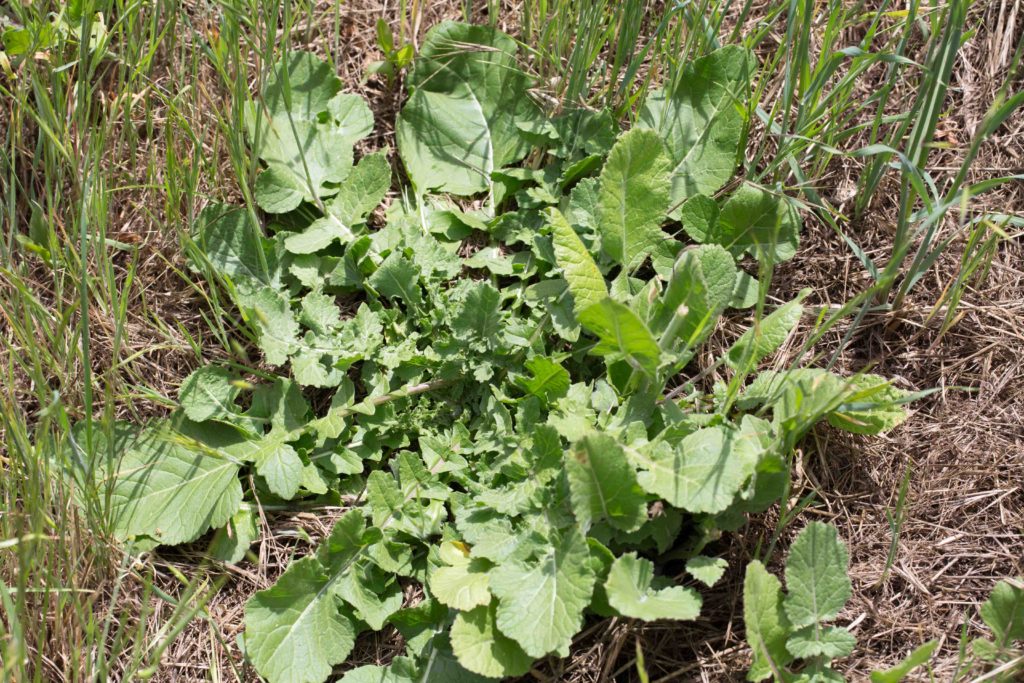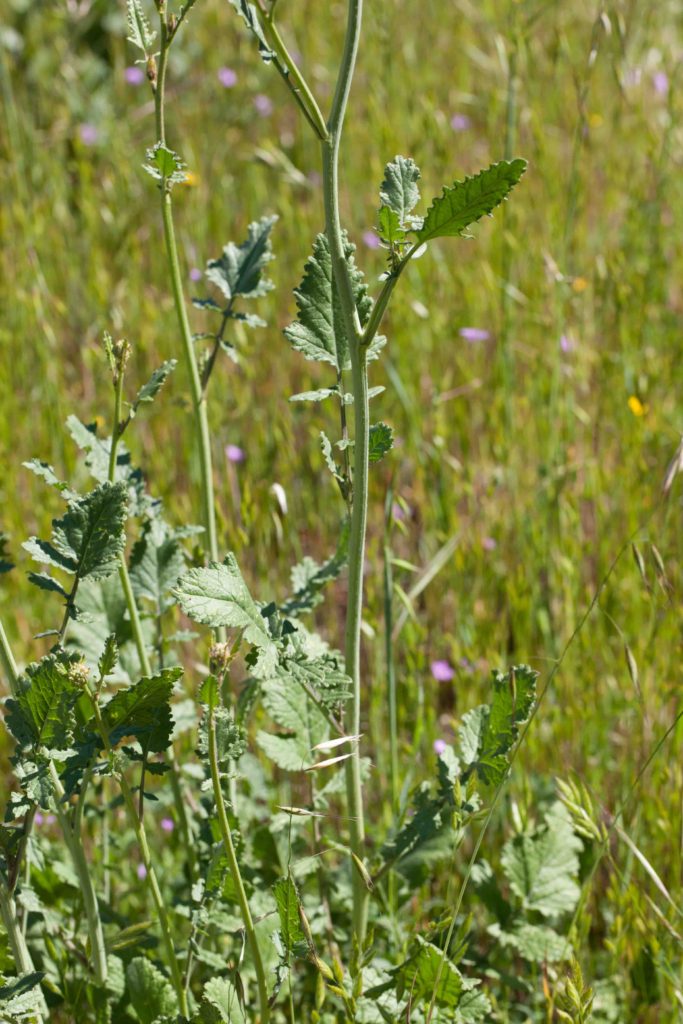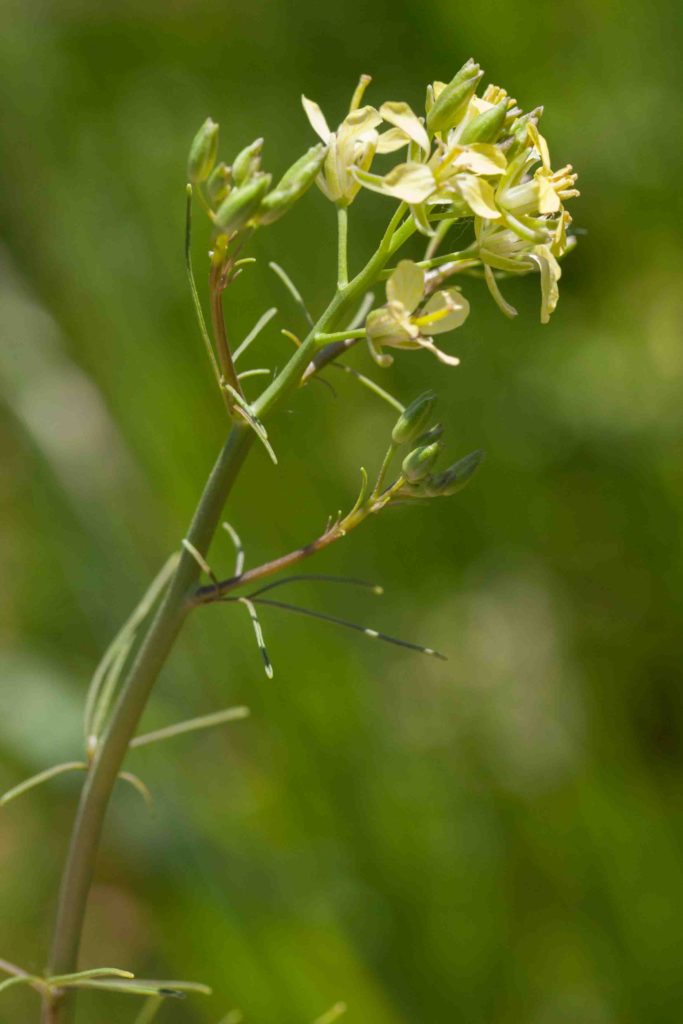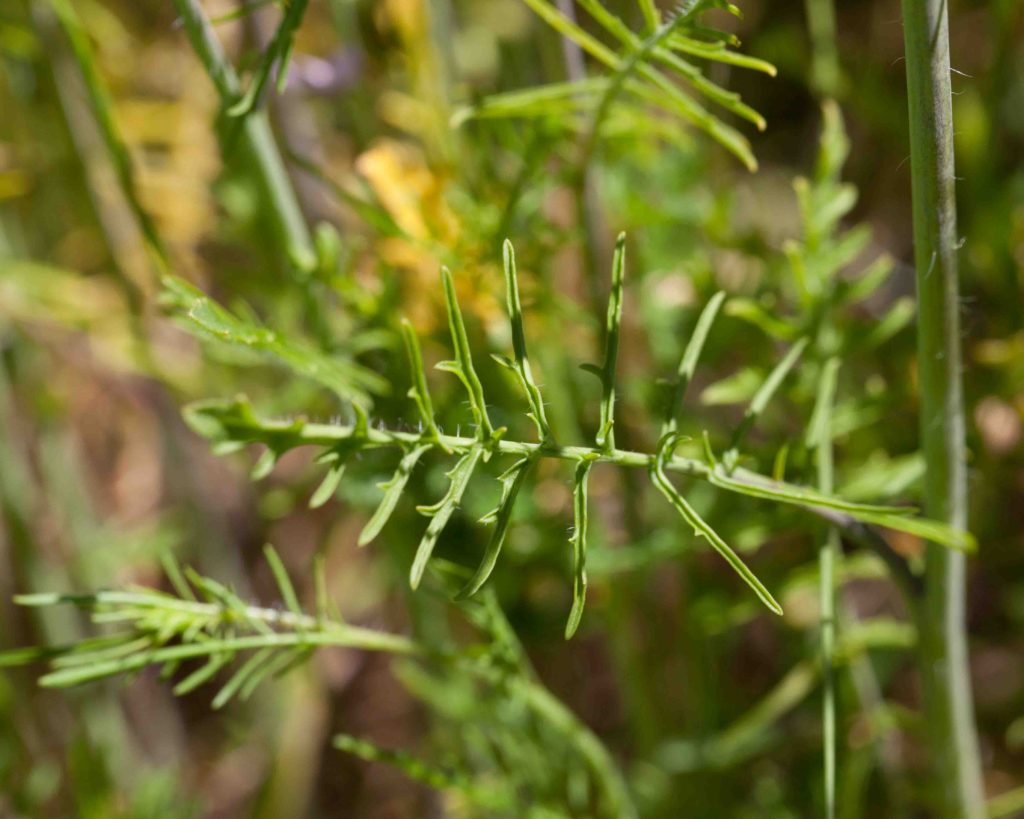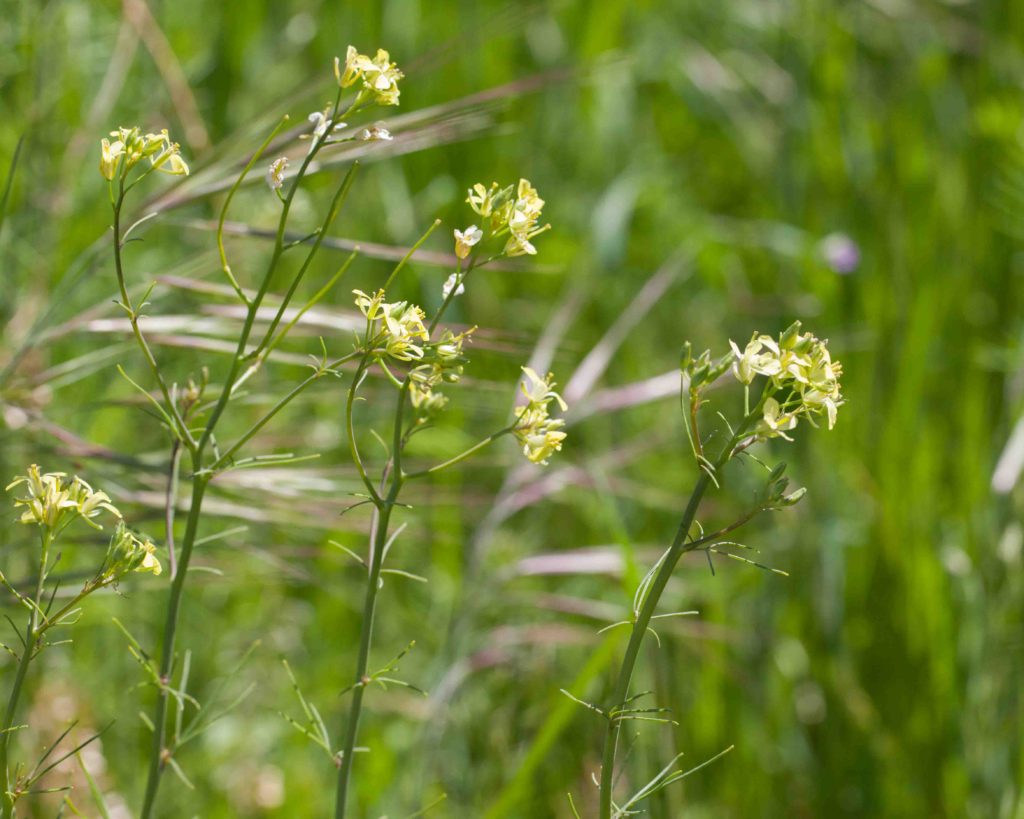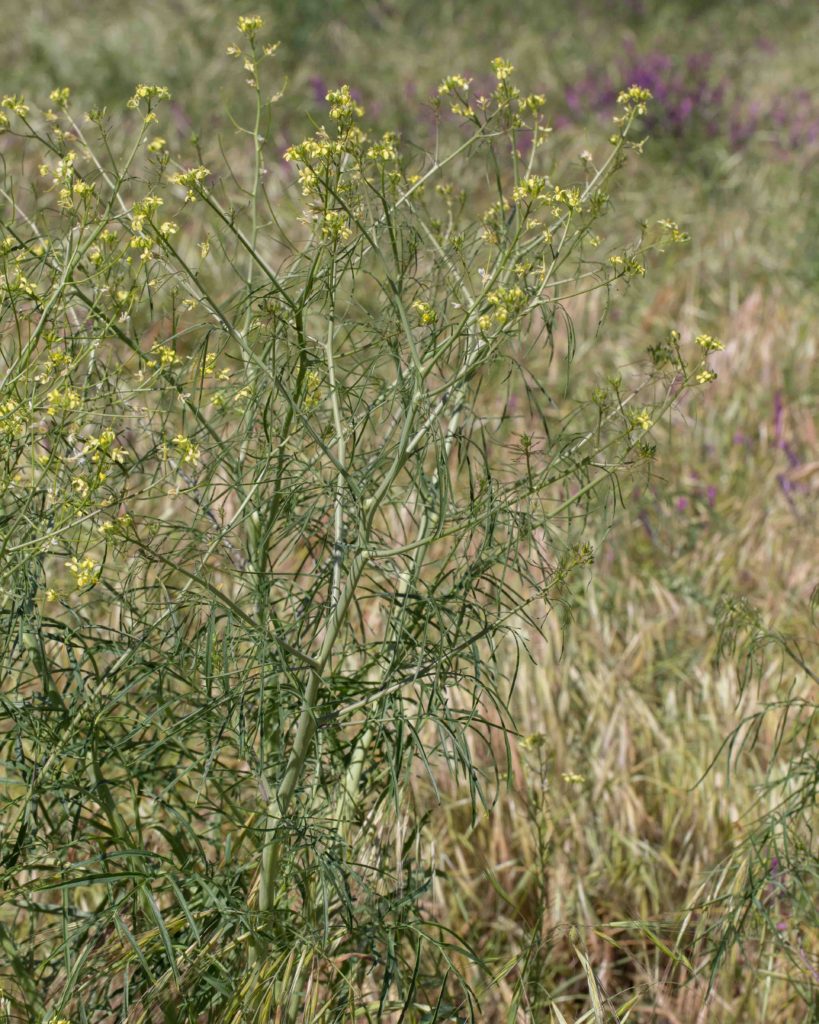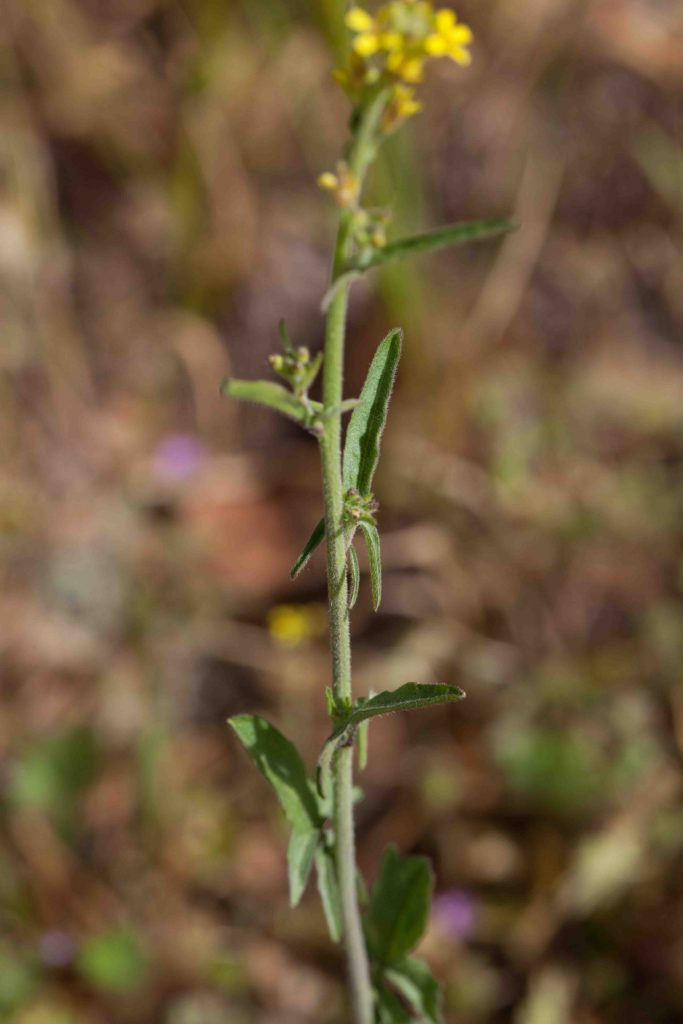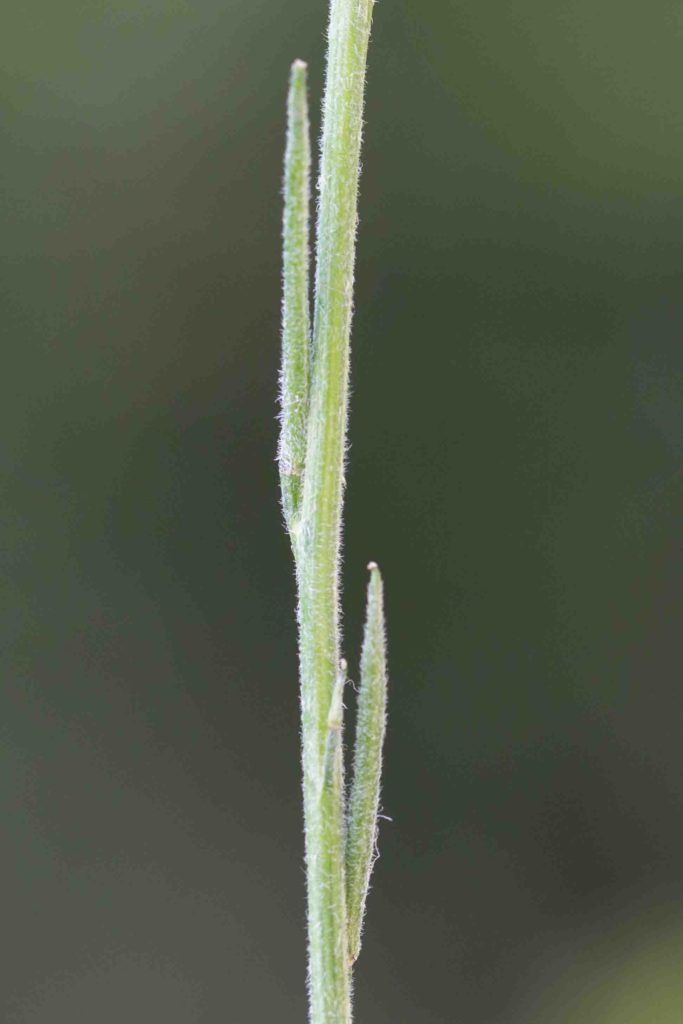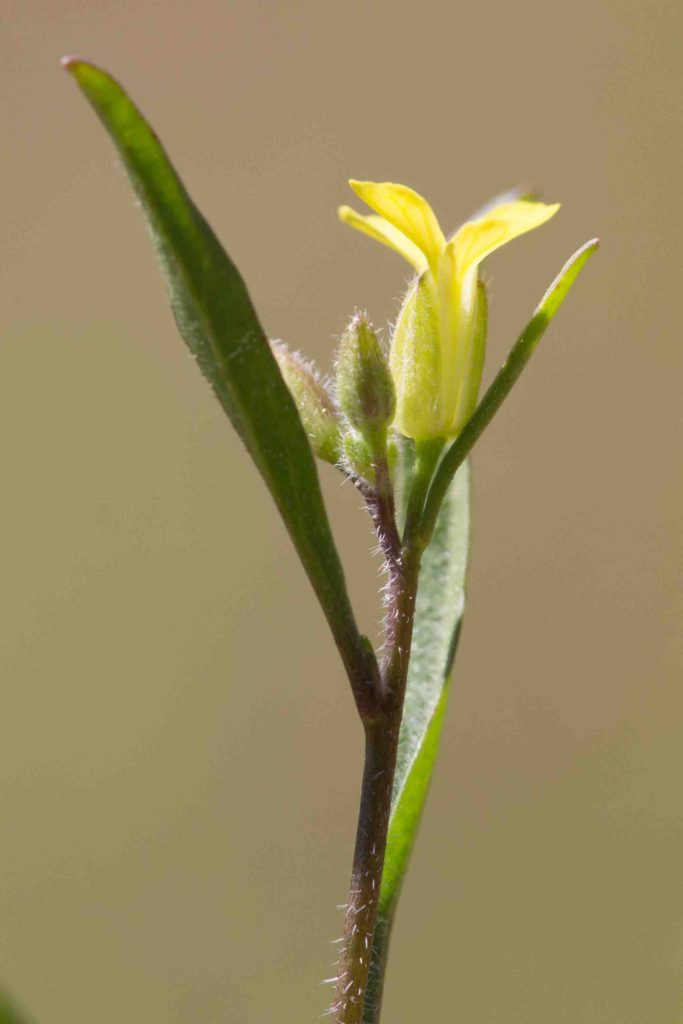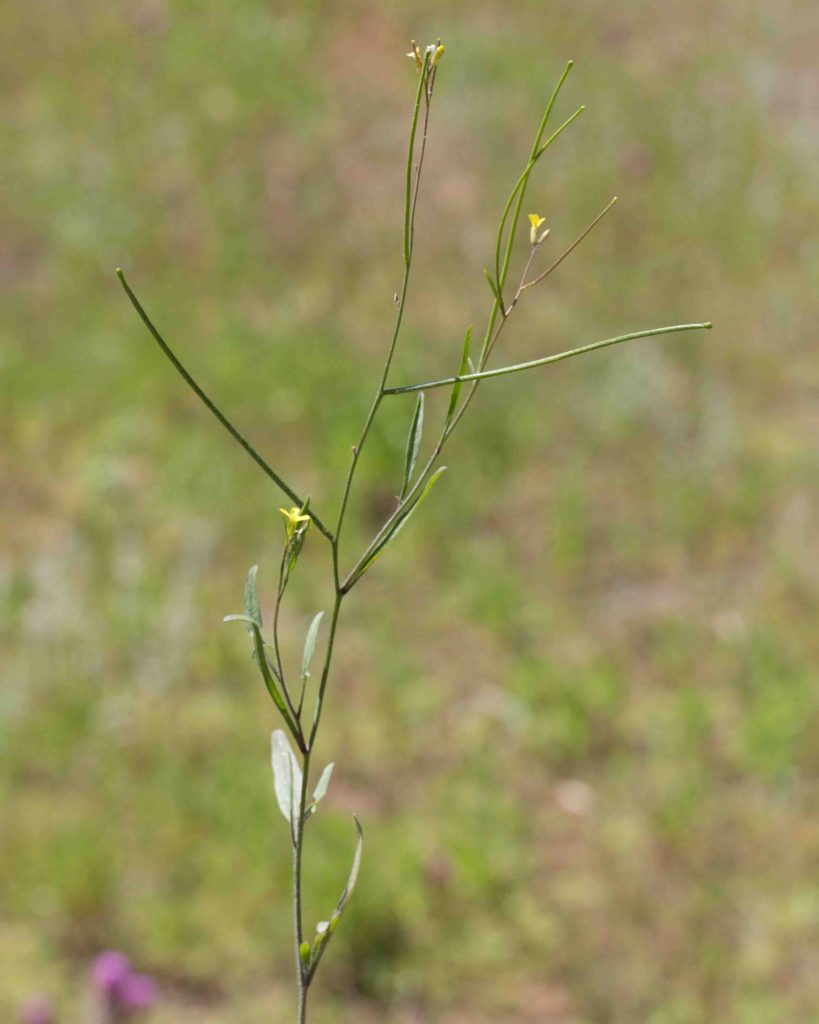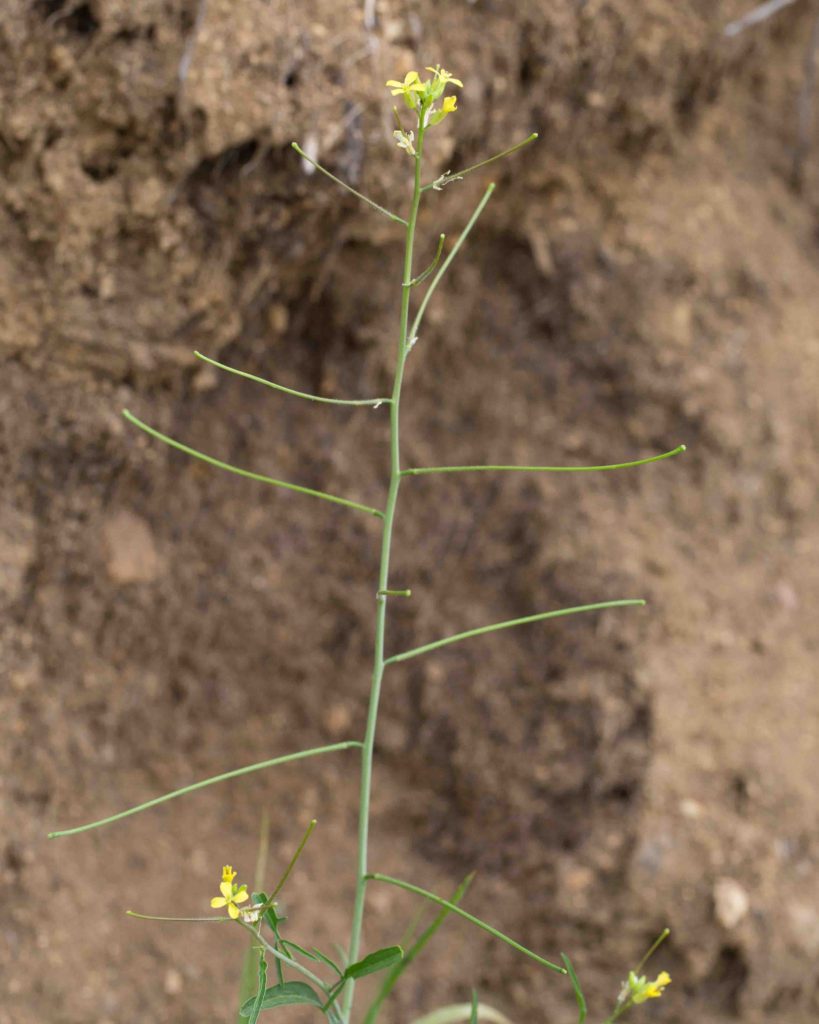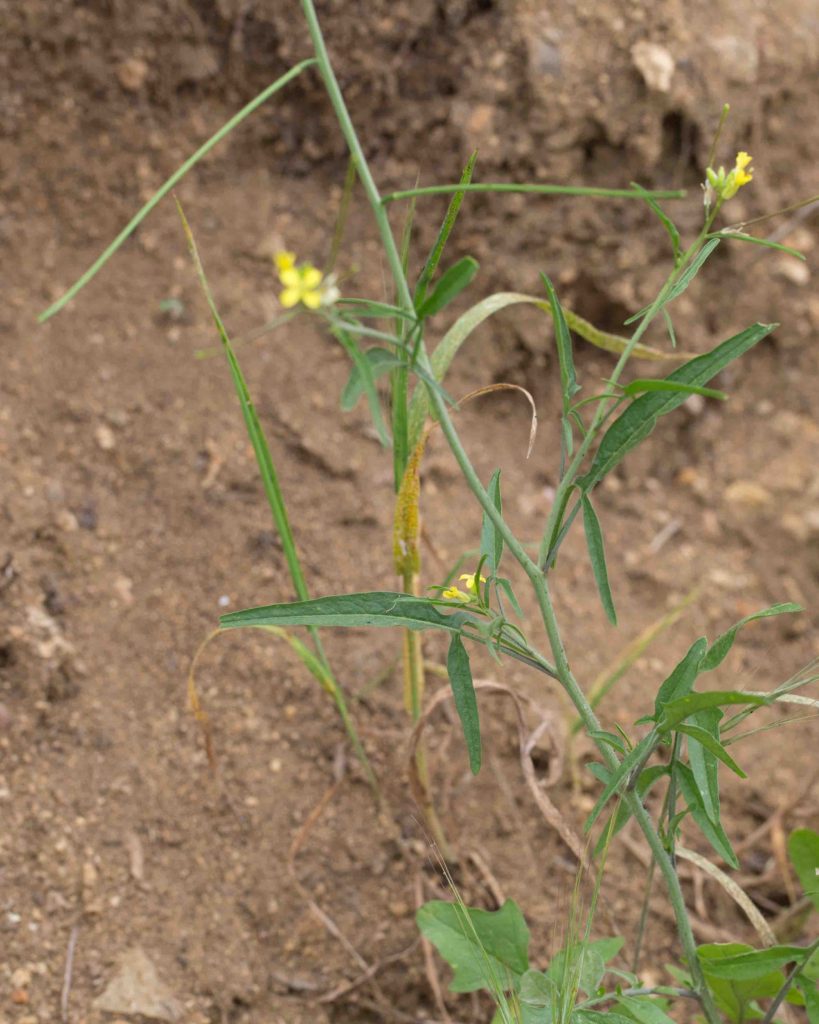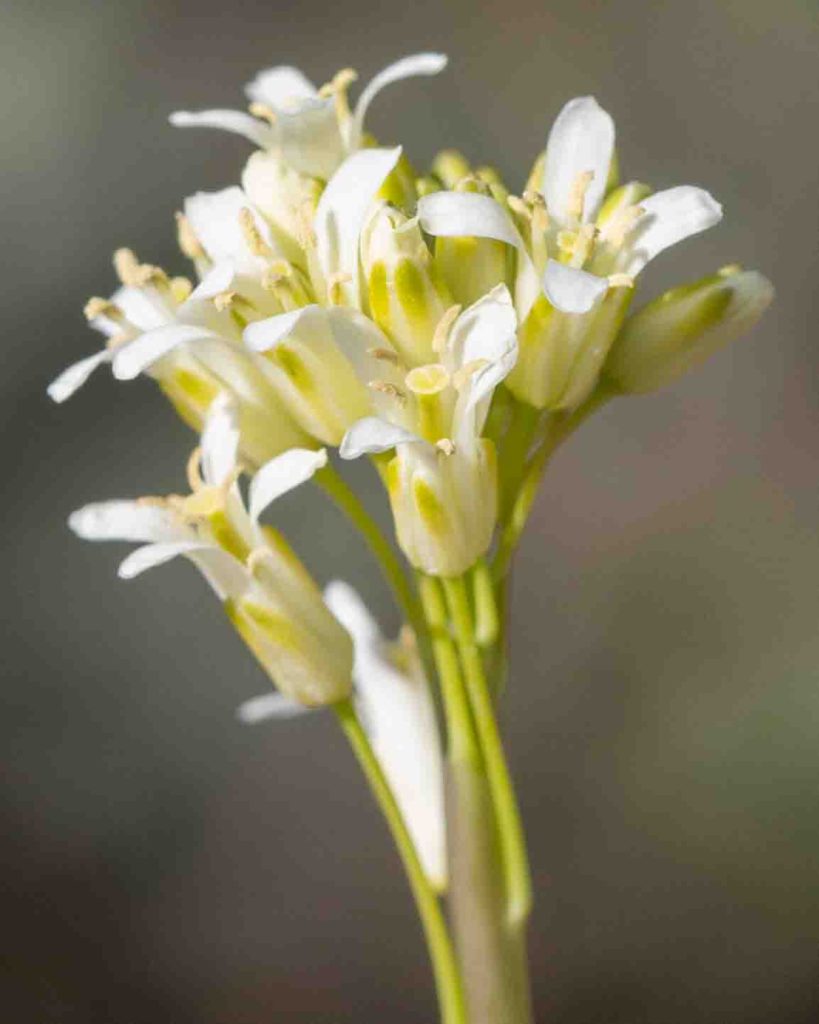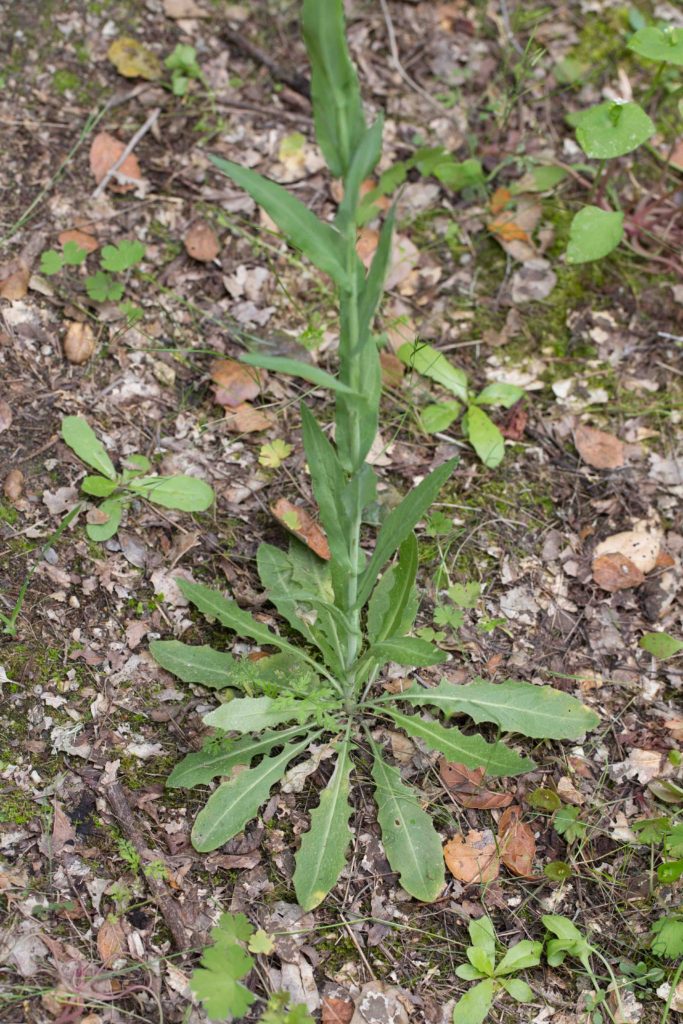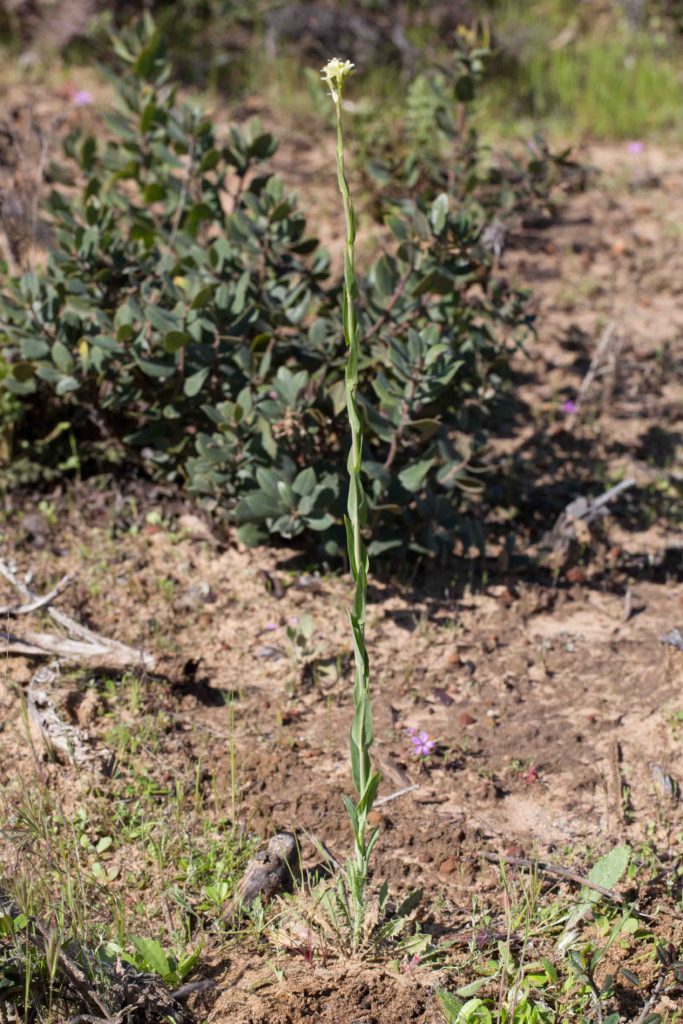Brassicaceae: Mustard Family — Mustards
Members of the mustard family all have four petals, usually in a cross shape (hence Cruciferae; the old name for the family). With the plants on this page, the flowers are quite similar. However, the leaves are different, as are the fruits. Some of the fruits are cylindric, others tapered towards the tip. Some are appressed to the stem, others are spreading and either ascending (upwards-curving) or reflexed (down-curving). All of the fruits are dehiscent, meaning they split longitudinally down a seam. The fruits of Brassica and Hirschfeldia are segmented, with a clearly defined terminal segment. Sisymbrium fruits are not segmented.
Black Mustard – Brassica nigra
Blooms:
Apr–Sept
Plant Height:
0.3–2 m
Flower Size:
Small
Origin:
Europe
Invasive?
Yes – moderate
Habitat:
Fields and waste places
Notes:
This is common, and easily confused with Summer Mustard (Hirschfeldia incana, see below). Both have variable leaves, all petioled. The lower ones are coarse, pinnately lobed and more or less toothed, while the upper cauline leaves are smaller. Black Mustard has slightly larger flowers, but the difference is not enough to notice in the field. The main differences are that the base of the Summer Mustard is hairy whereas the stem of Black Mustard is hairy only higher up; and, more significant, that the terminal sections of the fruits (both of which are appressed to the stem) are different. Black Mustard’s fruits have a smooth, cylindric terminal section, whereas Summer Mustard’s are constricted just below an expanded tip.
Field Mustard – Brassica rapa
Blooms:
Mar–June
Plant Height:
30–120 cm
Flower Size:
Small
Origin:
Europe
Invasive?
Yes – high
Habitat:
Coastal meadows, roadsides, fields
Notes:
This is an earlier bloomer than the other mustards, and even more invasive. In large quantities, it has a denser inflorescence and a brighter yellow color than Black Mustard (Brassica nigra, see above). A more objective difference lies in the leaves, which are glabrous and clasping at the base. The lower leaves can be pinnately lobed, with the terminal leaflet being the largest. This and Black Mustard are also clearly distinguished by their fruits. Field Mustard has fruits that are spreading to ascending, and noticeably tapered toward the tip, like the fruits of Wild Radish (Raphanus sativus).
California Mustard – Caulanthus lasiophyllus
Blooms:
Mar–June
Plant Height:
20–100 cm
Flower Size:
Small
Origin:
Native
Habitat:
Grassy places, often after burns or disturbance
Notes:
A leafy mustard, leaves being lanceolate to oblong, pinnately lobed or toothed. Like Tower Mustard (Turritis glabra, see below), it has white to creamy-white flowers. The calyx is cylindric, with greenish sepals. There are 4 long and 2 short stamens. The cylindric fruits are erect to reflexed, straight to outcurved. This is unlike Tower Mustard’s fruits, which are erect and more or less appressed.
Summer Mustard – Hirschfeldia incana
Blooms:
Apr–Oct
Plant Height:
40–150 cm
Flower Size:
Small
Origin:
Mediterranean
Invasive?
Yes – moderate
Habitat:
Roadsides and waste places
Notes:
Common but easily confused with Black Mustard (Brassica nigra). The base of the Summer Mustard is hairy, while the stem of Black Mustard is hairy only higher up. Also, the terminal sections of the fruits (both of which are appressed to the stem) are different. Black Mustard’s fruits have a smooth, cylindric terminal section, whereas Summer Mustard’s are constricted just below an expanded tip.
Tumble Mustard – Sisymbrium altissimum
Blooms:
May–July
Plant Height:
40–120 cm
Flower Size:
Small
Origin:
Europe
Habitat:
Disturbed areas, fields
Notes:
A relatively uncommon mustard, but one that is easily recognized by its slender, linear to thread-like, pinnately lobed leaves. Fruits are slender cylindric siliques, on spreading to ascending pedicels. Flowers are paler yellow than some other mustards.
Hedge Mustard – Sisymbrium officinale
Blooms:
Apr–Sept
Plant Height:
25–75 cm
Flower Size:
Small
Origin:
Europe
Habitat:
Disturbed areas, fields
Notes:
More common than Tumble Mustard (Sisymbrium altissimum, see above). This is most easily recognized by its leaves, oblanceolate with a single pair of smaller, backward facing lobes at the base of each leaf. The fruits are very different also, ascending, closely appressed to the stem and awl-shaped. Note the lack of a separate terminal segment.
Oriental Mustard – Sisymbrium orientale
Blooms:
May–June
Plant Height:
20–70 cm
Flower Size:
Small
Origin:
Europe
Habitat:
Disturbed areas, fields, roadsides
Notes:
Relatively uncommon in Monterey County, this is similar to Tumble Mustard (Sisymbrium altissimum, see above). Its upper leaves are arrow-shaped, simple, narrowly lanceolate to linear. The lobes at the base of the leaf are much narrower than those of Hedge Mustard (Sisymbrium offiicinale, see above), and extended more outwards at right angles than backwards. Fruits are similar to those of Tumble Mustard, but spreading almost horizontally from the stem.
Tower Mustard – Turritis glabra
Blooms:
Apr–July
Plant Height:
40–120 cm
Flower Size:
Small
Origin:
Native
Habitat:
Open grassy slopes
Notes:
A tall, slender plant with a single stem. There is a rosette of basal leaves, oblong to oblanceolate, slightly toothed or lobed. Cauline leaves are alternate, with arrow-shaped or clasping bases. The small white flowers with cream-colored sepals are clustered towards the top of the stem. Fruits are erect and more or less appressed. The plant is glaucous (covered in a white, waxy substance) above the base. Photo #2 by CJH.
